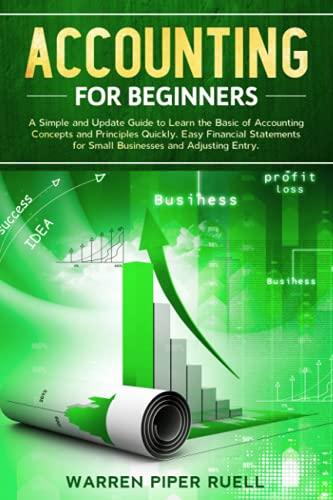Question
You plan to open a business with an initial investment of $100,000. You are trying to decide whether the business should be operated as a
You plan to open a business with an initial investment of $100,000. You are trying to decide whether the business should be operated as a C corporation or an S corporation. If you elect to be taxed as an S corporation, you will pay no corporate level tax and income from the business will be taxed at the individual rates only. The corporation will distribute just enough cash to you each year so that you can pay these taxes. If you are taxed as a C corporation, the corporation will pay a corporate level tax each year but will pay no dividends. In both cases, assume that the only appreciation in the business is the after-tax accumulation of cash. The before-tax return on investment (i.e., R) is 12% and is unaffected by your choice as to tax status.
At the end of the investment horizon, your corporation will make a liquidating distribution of all its assets. In the C corporation form, you must pay a capital gains tax on the excess of this distribution over your original investment of $100,000. However, if your business is an S corporation, the gain will be zero (given the assumptions made in this problem) because a shareholders basis in S corporation stock is increased by the taxable income recognized by the shareholder and reduced by cash distributions.
Required:
1. Create an Excel spreadsheet to calculate the future after-tax cash accumulations you would realize using either the C corporation form, Fc, or the S corporation form, Fs, over investment horizons ranging from one to 25 years and the two sets of tax rate assumptions shown below. For each investment horizon and set of tax rate assumptions, calculate the required after-corporate tax rate of return, rc*, that the C corporation form would have to generate to match the after-total-tax return of the S corporation. Your spreadsheet should look exactly like the one shown below (except that values for n=2 through n=24 will be completed). Note the because this problem fixes the pre-tax rates of return for both entities at Rc = Rs = 12%, the only way obtain a given rc* target is to alter the investment horizon.
| Set 1 | Set 2 | |
| Corporate Tax Rate | 35% | 30% |
| Individual Tax Rate | 30% | 40% |
| Capital Gains Tax Rate | 20% | 20% |
- Given the tax rates in Set 1, will a C corporation ever outperform an S corporation if Rc = Rs? Explain your answer.
- For the tax rates in Set 2, explain why the S corporation performs best over short investment horizons while the C corporation form performs best over long investment horizons.
| Inv | $100,000 | Inv | $100,000 | ||||||
| R | 12% | R | 12% | ||||||
| tc | 35% | tc | 30% | ||||||
| tp | 30% | tp | 40% | ||||||
| tcg | 20% | tcg | 20% | ||||||
| rp | 8.40% | rp | 7.20% | ||||||
| n | Fc | Fs | rc* | R* | n | Fc | Fs | rc* | R* |
| 1 | 106,240 | 108,400 | 10.50% | 16.15% | 1 | 106,720 | 107,200 | 9.0% | 12.86% |
| 25 | 543,069 | 751,159 | 9.25% | 14.24% | 25 | 620,927 | 568,682 | 8.01% | 11.44% |
Step by Step Solution
There are 3 Steps involved in it
Step: 1

Get Instant Access to Expert-Tailored Solutions
See step-by-step solutions with expert insights and AI powered tools for academic success
Step: 2

Step: 3

Ace Your Homework with AI
Get the answers you need in no time with our AI-driven, step-by-step assistance
Get Started


